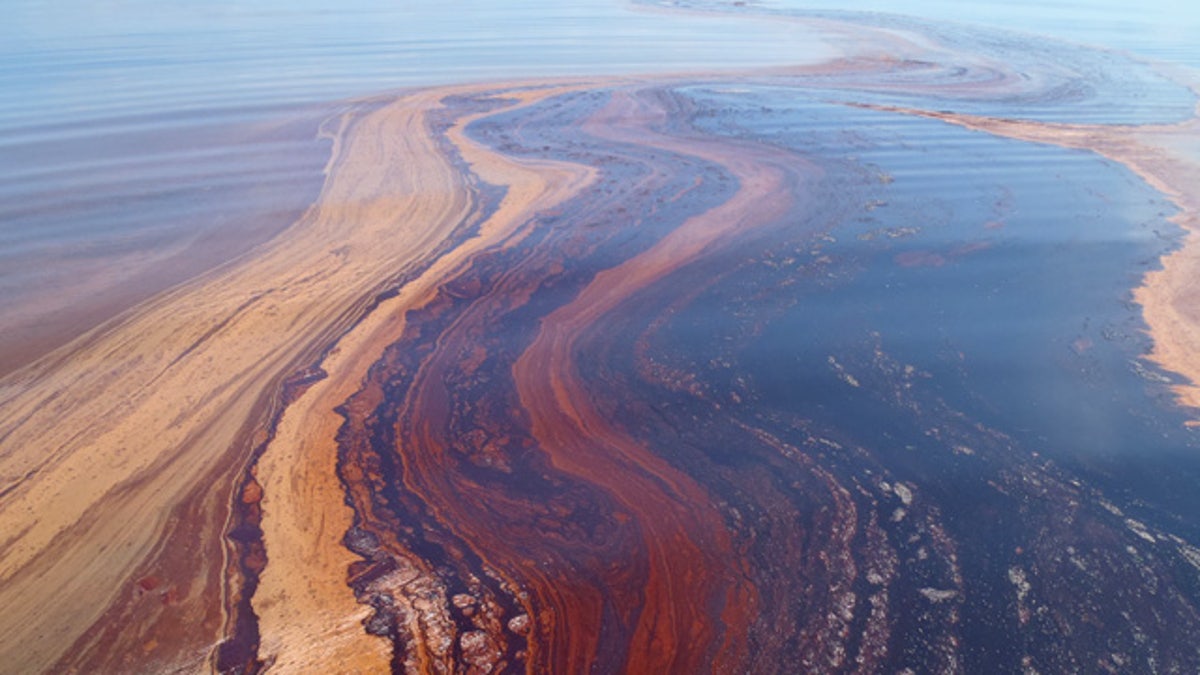
Researchers are studying the impact of the oil spill on microbes in Gulf waters and sediments. (Samantha Joye)
Vast undersea plumes of oil that can choke off marine life stretch from the site of the DeepWater rig explosion, argued a scientist on Tuesday -- plumes BP has stated do not exist.
Dr. Samantha Joye, professor of marine sciences at the University of Georgia, insists that the Gulf oil disaster won't go away anytime soon, and the massive plumes of oil she and her colleagues have been observing for the past two weeks are an essential part of the problem.
When the Deepwater Horizon oil rig exploded on April 20, Joye was researching methane leakage from oil drilling aboard a National Oceanic and Atmospheric Agency-funded research vessel 8 miles from the disaster site. She shifted her focus promptly to the site and quickly discovered a massive oil plume she and her colleagues estimate to be more than 15 miles long, 5 miles wide and some 300 feet thick at depths ranging from approximately 2,300 feet to 4,200 feet.
"It's a disaster zone," Joye told reporters at a press conference Tuesday morning, though she did praise NOAA's ability to coordinate the number of vessels in the area and the sheer scope of the cleanup efforts.
Joye is one of several scientists who have been reporting on the existence of the oil plumes, which BP has said several times do not exist. The oil company believes most oil from the leak is on the surface of the ocean.
During a tour of a BP PLC staging area for cleanup workers May 30, CEO Tony Hayward said the company's sampling showed "no evidence" that oil was suspended in large masses beneath the surface. He didn't elaborate on how the testing was done.
Hayward said that oil's natural tendency is to rise to the surface, and any oil found underwater was in the process of working its way up.
"The oil is on the surface," Hayward said. "There aren't any plumes."
"The plume is largely water," Joye wrote on her website Gulf Oil Blog, "not thick oil like you see on the surface in some places, it’s diluted oil and it’s most concentrated closest to the leaking riser pipe. The substance making up the plume is different from the oil on the surface of the Gulf, however.
"Think of it as gas-saturated oil that has been shot out of a deep sea cannon under intense pressure," she writes. "It’s like putting olive oil in a spray can, pressurizing it and pushing the spray button. What comes out when you push that button? A mist of olive oil. This well is leaking a mist of oil that is settling out in the deep sea."
BP has insisted that oil from the leaking well is on the surface of the water. Joye claims otherwise. "It's having a clear impact that you can see throughout the water column," she said, and the NOAA finally admitted its existence as well.
In a separate news conference, NOAA head Jane Lubchenco confirmed the finding, acknowledging that "yes, there is oil in the water column." The agency planned to analyze the several studies that have pointed to the existence of subsurface oil, which the U.S. agency confirms reach as far as 142 miles from the spill.
Joye and her team have just returned from a two-week research expedition to document the plume’s distribution, to measure the activity of microbes that break down the oil, and to measure variables such as dissolved oxygen concentration.
"There is a tremendous amount of oxygen consumption in the plumes," she wrote on her blog, at least 5-10 times higher than elsewhere in the ocean. Joye worries that the high rate of oxygen depletion will starve any oxygen-breathing life in the waters.
One of the main tacks BP has taken to clean up the spilled oil has been the use of dispersants, which break the oil up into smaller elements.
"The solution to pollution is not dilution," Joye quipped. "This is an excuse, and it takes away from the important things we should be thinking about."
In August, the Gulf currents will reverse and slosh back, she noted, meaning that the substances in the water will remain for a long time, and will have a long-term impact. She stressed the need to document and assess the scale of the impact the oil will have on the environment.
